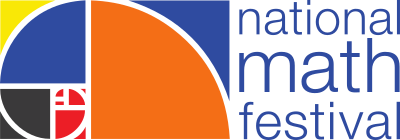Explore the NSF “We Are Mathematics” Video Competition Winners
To celebrate the 2019 National Math Festival, the National Science Foundation (NSF) invited NSF research grant recipients from around the U.S. to submit short videos to bring mathematics to life for Festival attendees. For those who may be curious about what it means to do advanced mathematics or conduct research in the mathematical sciences, these videos give fun and accessible glimpses into the lives and work of career mathematicians. You can explore the list of winners below, or visit the We Are Mathematics YouTube Channel (opens new window).
Contest Winners
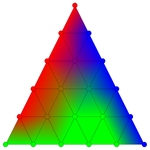
Fairly Dividing Rent (opens new window) – submitted by Dr. Kelsey Houston-Edwards
How should you fairly divide rent among three roommates, given their subjective preferences? Dr. Kelsey Houston-Edwards will show you how to fairly divide rent among two and three roommates, using a line and a triangle, respectively.
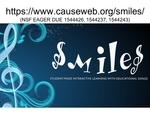
Interactive Educational Statistics Songs (opens new window) – submitted by the Project SMILES team
Remember how you learned the alphabet by singing it? What if songs could also help you learn, and better engage with, a difficult college subject like statistics? SMILES (Student-Made Interactive Learning with Educational Songs in introductory statistics) engages college students with a collection (opens new window) of 28 interactive songs! Results show that students find this to help their learning and to reduce the anxiety commonly experienced when learning statistics.

MycoFluidics: The Math of Fungal Adaptation (opens new window) – submitted by Dr. Marcus Roper, The MycoFluidics Lab
We used mathematical models to show how fungi build highways that solve the problems of congestion: on a fungal highway, the more traffic there is, the faster everyone gets to work! Over more than a billion years of evolution, fungi have learned how to create networks whose efficiency and elegance puts human highways to shame. As part of an NSF funded study of the many adaptations that enable fungi to thrive over the entire globe, we study how these networks are wired, and how they transport material — the contents of the cell, nutrients and nuclei — to feed the fungus’ growth. The MycoFluidics Lab uses optimization theory to analyze what kinds of functions the networks are trying to balance, and mathematical imaging tools to compare our optimal networks with real networks that we can observe in the lab.

Non-Euclidean Virtual Reality Using Ray-Marching (opens new window) – submitted by Dr. Henry Segerman
Suppose that you walk in a straight line, then turn left by 90 degrees, and then repeat these steps until you get back to where you started. In a flat space with no curvature, you have just walked around a square. In a positively curved space, like the surface of a sphere, you could instead have walked around a right-angled triangle: you could start on the equator and walk a quarter the way around the sphere, then turn left and go up to the north pole, then turn left again and walk down to your starting point. In this video, Dr. Segerman is (virtually) in a negatively curved space, walking around a right-angled pentagon. The study of negatively curved spaces like this (hyperbolic space) is an intense area of research in three-dimensional geometry and topology. The simulation is available to try for yourself online and works in any web browser (opens new window) – there is even a version for iOS and Android mobile devices.
People’s Choice Winner
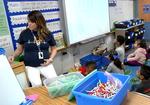
Primarily Math (opens new window) – submitted by the Primarily Math team
Primarily Math is a professional development program for primary-grade teachers (K-3) in Nebraska. This 18-credit-hour certificate program at the University of Nebraska-Lincoln is designed to change the paradigm and educate and strengthen teachers in their teaching and development of mathematics. This grant has studied the effect of the program on teachers and the achievement of the students they teach. This video speaks to the impact of the program from the perspectives of teachers who have participated.
Honorable Mentions

Math-Dance: Algebra, Geometry, and Topology (opens new window) – submitted by Nancy Scherich
Math Inspired by Inference (opens new window) – submitted by The Up and Down Arrows team
Cells, Clustering Algorithms, and Energies (opens new window) – submitted by Dr. Katy Craig
MatheMaddies’ Ice Cream Map (opens new window) – submitted by the MatheMaddies team
How to Factor Primes Like a Number Theorist (opens new window) – submitted by Sander Mack-Crane
Pilot Wave Theory: A Mathematical Bridge (opens new window) – submitted by The MIT Applied Math Laboratory
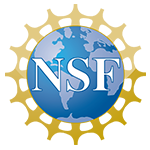
The National Science Foundation (NSF) is the only federal agency tasked with keeping the United States at the leading edge of discovery in all fields of fundamental science and engineering, from astronomy to mathematics to zoology. In addition to funding research and education in traditional academic areas, the agency also supports “high risk, high pay off” ideas, novel collaborations, and projects that may seem like science fiction today but will be taken for granted tomorrow. For more information, see nsf.gov/about (opens new window).
